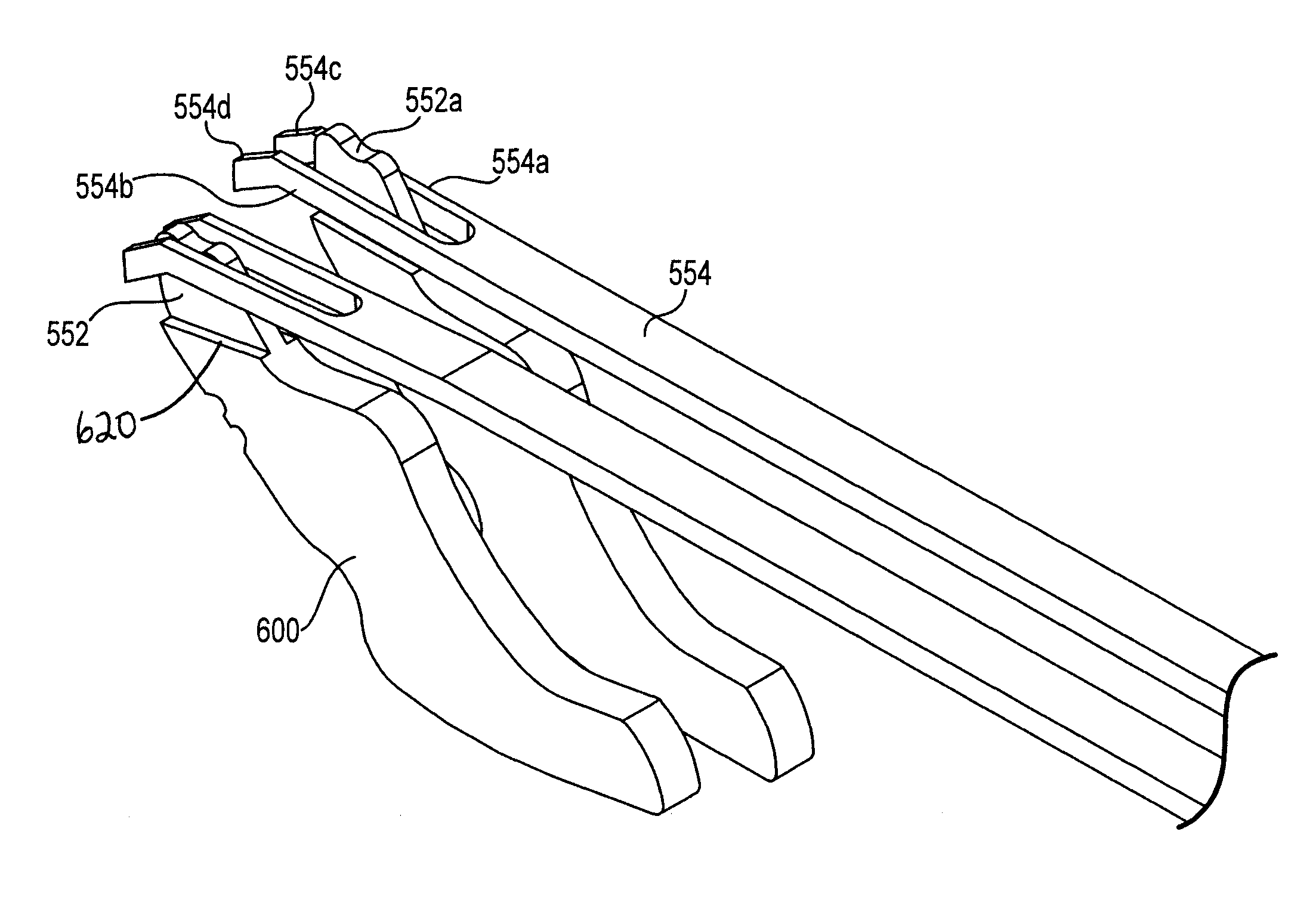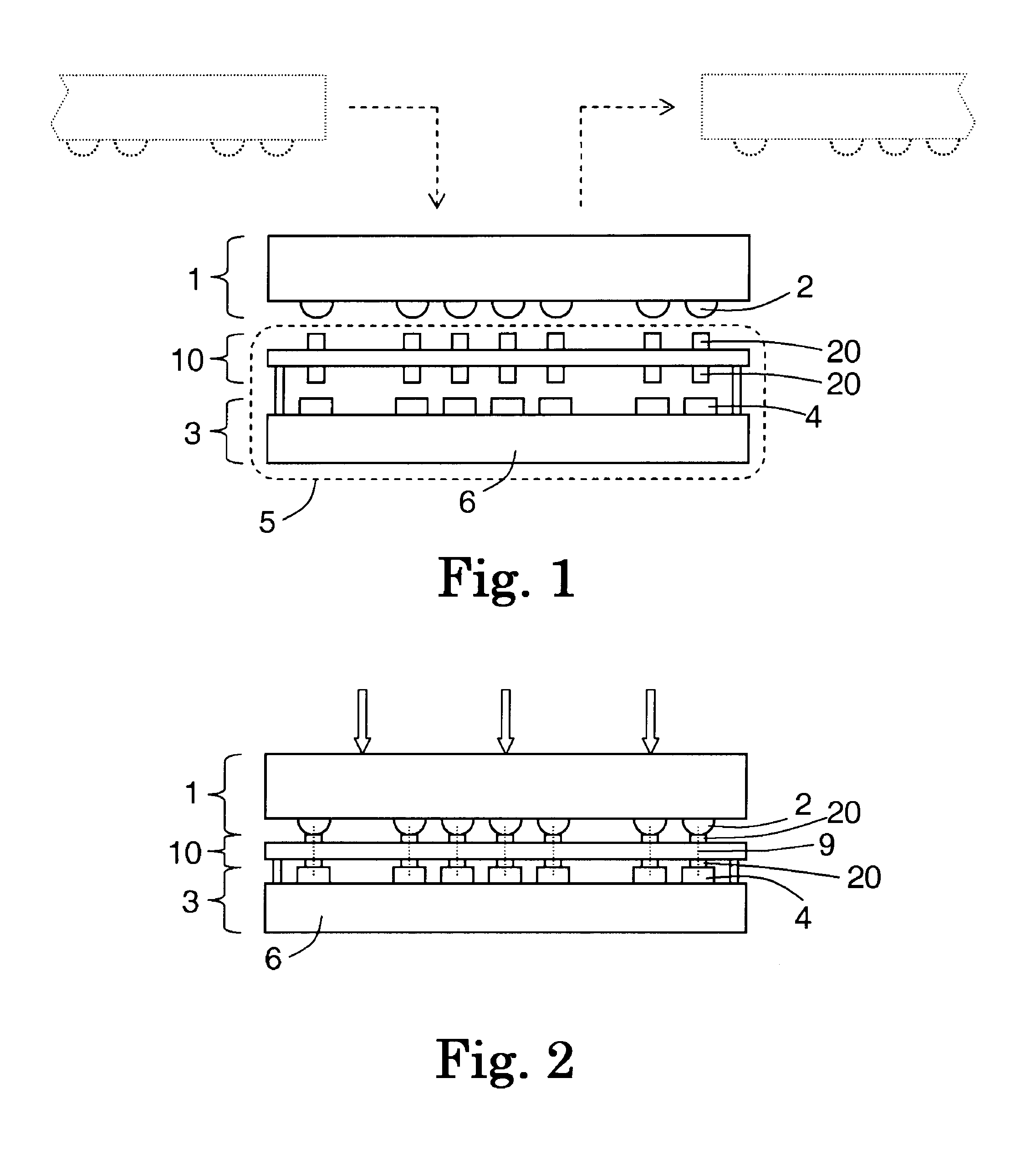Electrically conductive Kelvin contacts for microcircuit tester
a microcircuit tester and electrical conductor technology, applied in the direction of electronic circuit testing, measurement devices, instruments, etc., can solve the problems of reducing the value of the circuit board at that point, affecting the test results, so as to achieve the effect of limiting the possibility of flexur
- Summary
- Abstract
- Description
- Claims
- Application Information
AI Technical Summary
Benefits of technology
Problems solved by technology
Method used
Image
Examples
Embodiment Construction
[0086]A general summary of the disclosure follows.
[0087]The terminals of a device under test are temporarily electrically connected to corresponding contact pads on a load board by a series of electrically conductive contacts. The terminals may be pads, balls, wires (leads) or other contact points. Each terminal that undergoes Kelvin testing connects with both a “force” contact and a “sense” contact, with each contact electrically connecting to a respective, single contact pad on the load board. The force contact delivers a known amount of current to or from the terminal, and the sense contact measures a voltage at the terminal and draws a negligible amount of current to or from the terminal. The sense contact partially or completely laterally surrounds the force contact, so that it need not have its own resiliency, though it may also be resilient in its own right. This helps keep the force contact in alignment by preventing lateral wobbling. In a first case, the sense contact has a...
PUM
 Login to View More
Login to View More Abstract
Description
Claims
Application Information
 Login to View More
Login to View More - R&D
- Intellectual Property
- Life Sciences
- Materials
- Tech Scout
- Unparalleled Data Quality
- Higher Quality Content
- 60% Fewer Hallucinations
Browse by: Latest US Patents, China's latest patents, Technical Efficacy Thesaurus, Application Domain, Technology Topic, Popular Technical Reports.
© 2025 PatSnap. All rights reserved.Legal|Privacy policy|Modern Slavery Act Transparency Statement|Sitemap|About US| Contact US: help@patsnap.com



